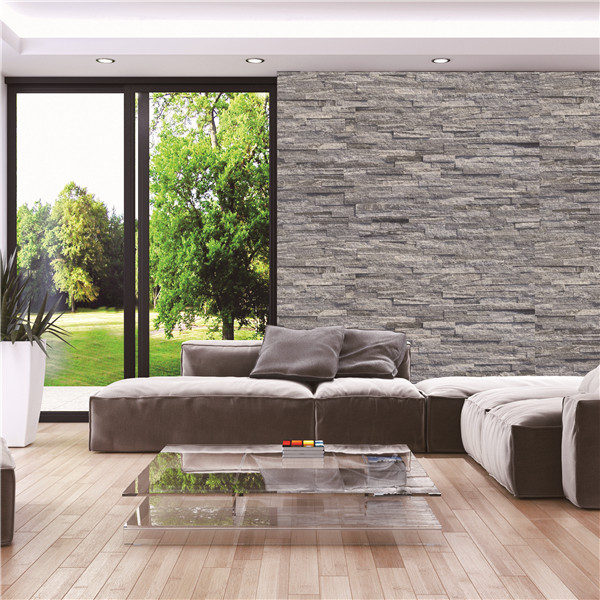Coastal Cultured Stone A Versatile and Sustainable Building Material for Coastal Environments

Introduction
Coastal areas are known for their stunning beauty, but they also present unique challenges when it comes to building materials. Harsh weather conditions, saltwater exposure, and erosion are just a few of the factors that can impact the durability and longevity of traditional building materials. In recent years, coastal cultured stone has emerged as a popular choice for construction projects in coastal environments due to its versatility, durability, and sustainability. In this article, we will explore the benefits of coastal cultured stone and its applications in coastal construction.
What is Coastal Cultured Stone?
Coastal cultured stone is a man-made building material that is designed to mimic the appearance and texture of natural stone. It is typically made from a combination of cement, aggregates, and pigments that are molded and colored to resemble a variety of natural stone types, such as limestone, slate, or granite. Coastal cultured stone is available in a wide range of shapes, sizes, and colors, making it a versatile choice for a variety of architectural styles and design preferences.
Benefits of Coastal Cultured Stone
1. Durability: One of the key benefits of coastal cultured stone is its durability. Unlike natural stone, which can be prone to cracking, chipping, and staining, coastal cultured stone is engineered to withstand the harsh conditions of coastal environments. It is resistant to saltwater corrosion, UV damage, and extreme weather conditions, making it an ideal choice for coastal construction projects.
2. Versatility: Coastal cultured stone is available in a wide range of styles, colors, and textures, allowing architects and designers to create custom looks that complement the surrounding environment. Whether you are looking to achieve a rustic, traditional, or contemporary aesthetic, there is a coastal cultured stone option to suit your needs.
3. Sustainability: Coastal cultured stone is an environmentally friendly building material that is made from natural and recycled materials. By choosing coastal cultured stone over natural stone, you can reduce your carbon footprint and help preserve natural resources. Additionally, coastal cultured stone is produced using efficient manufacturing processes that minimize waste and emissions, making it a sustainable choice for eco-conscious builders.
4. Cost-Effective: In addition to its durability and sustainability, coastal cultured stone is also a cost-effective building material. It is typically less expensive than natural stone, making it a budget-friendly option for construction projects. Additionally, https://www.fs-slate.com/step-stone/ cultured stone is lightweight and easy to install, which can help reduce labor costs and construction time.
Applications of Coastal Cultured Stone
1. Exterior Cladding: Coastal cultured stone is commonly used as an exterior cladding material for residential homes, commercial buildings, and other structures in coastal areas. Its durability and weather resistance make it an ideal choice for protecting buildings from saltwater, wind, and erosion. Coastal cultured stone can be used to create stunning facades, accent walls, and architectural details that enhance the aesthetic appeal of the building.
2. Landscaping: Coastal cultured stone is also popular for landscaping projects in coastal environments. It can be used to create retaining walls, garden borders, walkways, and outdoor living spaces that blend seamlessly with the natural surroundings. Coastal cultured stone is a versatile landscaping material that can be used to add texture, color, and visual interest to any outdoor space.
3. Interior Design: In addition to exterior applications, coastal cultured stone is also used in interior design to create feature walls, fireplace surrounds, and accent pieces. Its natural appearance and tactile texture can add warmth and character to a space, creating a cozy and inviting atmosphere. Coastal cultured stone is a popular choice for coastal-themed interiors, beach houses, and waterfront properties.
4. Water Features: Coastal cultured stone is ideal for creating water features such as fountains, ponds, and waterfalls in coastal landscapes. Its water-resistant properties make it a durable choice for structures that are exposed to moisture and saltwater. Coastal cultured stone can be used to mimic the look of natural rock formations, adding a touch of natural beauty to any water feature.
Maintenance of Coastal Cultured Stone
While coastal cultured stone is a durable and low-maintenance building material, it does require some upkeep to ensure its longevity and appearance. Here are some tips for maintaining coastal cultured stone:
1. Regular Cleaning: To keep coastal cultured stone looking its best, it is important to regularly clean it with mild soap and water. Avoid using harsh chemicals or abrasive cleaners, as they can damage the surface of the stone.

2. Sealing: Depending on the type of coastal cultured stone you choose, it may benefit from periodic sealing to protect it from water damage and staining. Consult with the manufacturer or a professional installer to determine the appropriate sealing schedule for your specific stone type.
3. Repairing Damage: In the event that coastal cultured stone becomes damaged, it is important to address the issue promptly to prevent further deterioration. Small chips or cracks can often be repaired with a patching compound or epoxy filler, while more extensive damage may require professional repair.
4. Inspecting Regularly: As part of your routine maintenance, inspect coastal cultured stone for signs of wear, damage, or discoloration. Address any issues promptly to prevent them from worsening and compromising the integrity of the stone.
Conclusion
Coastal cultured stone is a versatile, durable, and sustainable building material that is well-suited for construction projects in coastal environments. Its natural appearance, weather resistance, and eco-friendly properties make it a popular choice for architects, designers, and builders looking to create beautiful and resilient structures by the sea. Whether used for exterior cladding, landscaping, interior design, or water features, coastal cultured stone offers endless possibilities for enhancing the beauty and functionality of coastal spaces. By choosing coastal cultured stone for your next project, you can enjoy the benefits of a high-quality building material that is as practical as it is aesthetically pleasing.
